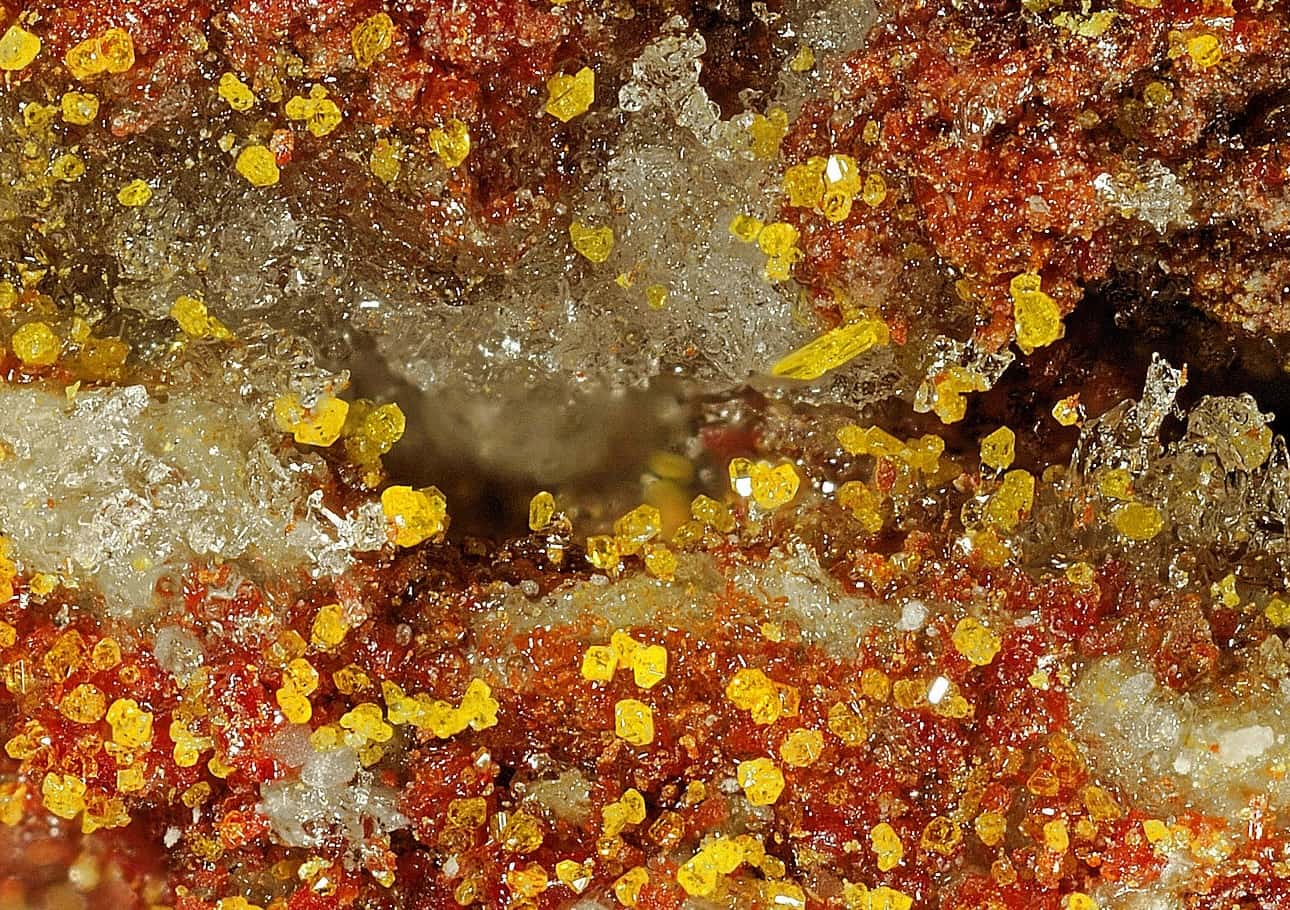
Dimorphite is a fascinating mineral that often flies under the radar. Found in volcanic fumaroles, this rare mineral has a unique composition and intriguing properties. But what exactly makes dimorphite so special? Dimorphite is composed of arsenic and sulfur, forming in environments rich in these elements. Its striking yellow color and crystal structure make it a subject of interest for mineralogists and collectors alike. Beyond its appearance, dimorphite has practical applications in various scientific fields. From its formation process to its uses, there’s a lot to learn about this captivating mineral. Ready to uncover some intriguing facts about dimorphite? Let’s dive in!
Key Takeaways:
- Dimorphite is a rare mineral with unique properties, found in volcanic fumaroles and hydrothermal veins. It's toxic, but its fluorescent glow and crystal structure make it a prized specimen for collectors.
- Dimorphite forms in high-temperature environments and is associated with arsenic-rich vapors. Its rarity and interesting properties make it a fascinating subject for mineral enthusiasts and scientists alike.
What is Dimorphite?
Dimorphite is a fascinating mineral with unique properties. It is a rare arsenic sulfide mineral that has intrigued scientists and mineral enthusiasts alike. Let's dive into some captivating facts about this mineral.
-
Dimorphite is composed of arsenic and sulfur, giving it the chemical formula As4S3.
-
It was first discovered in 1849 in Tuscany, Italy.
-
The name "dimorphite" comes from the Greek words "di" (two) and "morphe" (form), referring to its two distinct crystal forms.
-
Dimorphite typically forms in volcanic fumaroles, which are openings in the Earth's crust that emit steam and gases.
-
It can also be found in hydrothermal veins, where hot, mineral-rich water flows through cracks in rocks.
-
The mineral is usually yellow to orange in color, but it can also appear red or brown.
-
Dimorphite has a resinous to greasy luster, making it look somewhat shiny.
-
It has a Mohs hardness of 1.5 to 2, meaning it is quite soft and can be scratched easily.
-
The mineral is brittle and can break or crumble under pressure.
-
Dimorphite is often associated with other arsenic minerals, such as realgar and orpiment.
Where Can You Find Dimorphite?
Dimorphite is not a common mineral, but it can be found in specific locations around the world. Here are some places where you might come across this intriguing mineral.
-
Tuscany, Italy, is the type locality where dimorphite was first discovered.
-
It has also been found in the volcanic regions of Japan.
-
In the United States, dimorphite has been reported in Nevada and Utah.
-
The mineral has been discovered in the fumaroles of the Kamchatka Peninsula in Russia.
-
Dimorphite can also be found in the hydrothermal veins of the Czech Republic.
-
Other notable locations include the volcanic areas of Indonesia and the Philippines.
-
Collectors often seek out dimorphite specimens from these regions due to their rarity and unique appearance.
How is Dimorphite Formed?
The formation of dimorphite involves specific geological processes. Understanding these processes can help explain why this mineral is so rare.
-
Dimorphite forms in high-temperature environments, typically above 100°C.
-
It crystallizes from arsenic-rich vapors emitted by volcanic fumaroles.
-
The mineral can also form from the alteration of other arsenic sulfide minerals, such as realgar.
-
Hydrothermal activity, where hot water circulates through rocks, can lead to the formation of dimorphite.
-
The presence of sulfur and arsenic in the environment is crucial for the formation of this mineral.
-
Dimorphite can also form as a secondary mineral in the oxidation zones of arsenic-rich ore deposits.
-
The unique conditions required for its formation contribute to its rarity.
Interesting Uses and Properties of Dimorphite
Dimorphite may not be well-known, but it has some interesting uses and properties that make it worth studying.
-
Due to its arsenic content, dimorphite is toxic and should be handled with care.
-
The mineral has been studied for its potential use in semiconductor technology.
-
Its unique crystal structure makes it of interest to mineralogists and crystallographers.
-
Dimorphite can fluoresce under ultraviolet light, emitting a bright yellow glow.
-
The mineral's softness and brittleness make it unsuitable for most practical applications.
-
Despite its toxicity, dimorphite is a prized specimen for mineral collectors due to its rarity and striking appearance.
Final Thoughts on Dimorphite
Dimorphite, a fascinating mineral, holds a unique place in the world of geology. Its distinct crystal structures and rare occurrence make it a subject of intrigue for scientists and enthusiasts alike. Understanding its formation process and chemical composition can provide insights into geological processes and the Earth's history.
While not widely known, dimorphite's properties and uses in various industries highlight its importance. From its role in scientific research to potential applications in technology, this mineral proves to be more than just a geological curiosity.
Exploring dimorphite's facts and features can spark curiosity and appreciation for the natural world. Whether you're a student, a hobbyist, or a professional, learning about dimorphite enriches your knowledge and deepens your connection to Earth's wonders. Keep digging into the world of minerals; you never know what you might uncover next!
Frequently Asked Questions
Was this page helpful?
Our commitment to delivering trustworthy and engaging content is at the heart of what we do. Each fact on our site is contributed by real users like you, bringing a wealth of diverse insights and information. To ensure the highest standards of accuracy and reliability, our dedicated editors meticulously review each submission. This process guarantees that the facts we share are not only fascinating but also credible. Trust in our commitment to quality and authenticity as you explore and learn with us.
